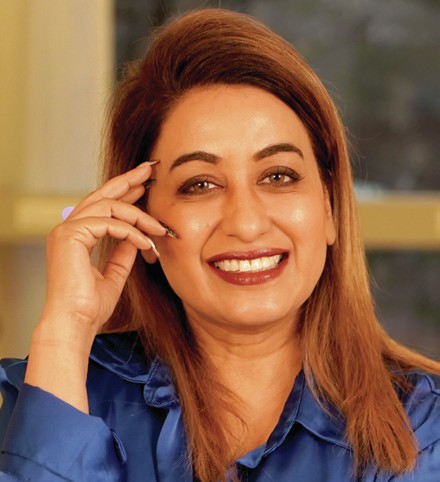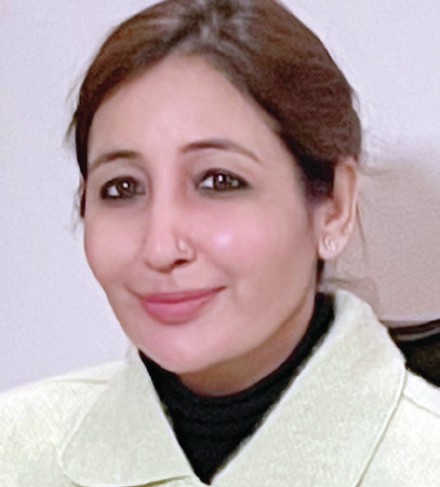Man-up: ANTI-AGEING
Men’s mindset towards anti-ageing and skincare treatments have shifted as they have been increasingly seeking aesthetic consultations and care. Vishakha Sonawane talks to dermatologists to understand the anti-ageing market for men in India.
Vishakha Sonawane
The anti-ageing market has traditionally been associated with women seeking aesthetic treatments. From treatments such as dermal fillers and chemical peels to microdermabrasion non-ablative skin rejuvenation, the female demographic appears to be the prime target audience. But, this is changing – slowly and steadily.
As the anti-ageing market in India continues to see a rise, the demand for aesthetic treatments among men has also witnessed an upward trend. Signs of ageing can be anything – skin laxity, fine lines and wrinkles, greying or thinning of hair. And, even men have started noticing them and taking steps to reverse these signs. Although a regular skincare routine can help slow down skin ageing, it is important to consult a dermatologist when the routine is no longer effective.
THE DEMAND
There has been a shift in the attitude of men looking to slow down or tackle ageing skin. Even dermatologists agree that a growing number of men are seeking professional help to reverse the signs of ageing – and there could be several reasons for this.
Stating that the reasons for a rise in demand for aesthetic treatments among men is multi-factorial, Dr Apratim Goel, Cosmetic Dermatologist & Founder, Cutis Skin Clinic, explains,
“The need to look energetic and youthful at their workplace, increased use of social media, online meetings, increased awareness of the safety and efficacy of the treatments are all reasons for the current demand for anti-aging treatments in men.”

Dr Apratim Goel

Dr Gulhima Arora
For Dr Gulhima Arora, Senior Consultant Dermatologist & Founder, Director, Mehektagul Dermaclinic, “It is essential for aesthetic medical practitioners to be well-versed with the male demographic. They should know how to approach that demographic since the demand is increasing by the day.
On her part, Dr Shubha Kesari, Medical Director & Senior Dermatologist, Nypunya Aesthetic Clinic, agrees that men have become conscious about their appearance and still need a little “cajoling” to make them follow basic skincare routine.

Dr Shubha Kesari
SIGNS OF AGEING: MEN VS. WOMEN
Men’s skin differs significantly from that of women’s in terms of thickness and texture, which can result in differences in how their skin ages. One of the reasons for this is not taking care of their skin early in their lives, according to Dr Arora. She says that men age poorly as opposed to that of women because they are not diligent with skin care and are primarily involved in outdoor and field-work. “They tend to have deeper creases and wrinkles owing to their thicker muscles and the above factors. Textural impairment of their skin is also more. They tend to lose more volume compared to their female counterparts with age owing to having genetically ‘less fat’ to begin with.”
According to Dr Kesari, men tend to have thicker and more seborrheic skin because of which their skin does not age as quickly. Furthermore, their skin is not so much as prone to hormonal changes as that of women.
Dr Goel points out to one of the first signs of ageing in men as the receding hairline. “Hair treatments have now become more common among men than women. Treatments like PRP, stem cell and even hair transplant for scalp and beard are common among men with androgenetic alopecia,” she says.
She highlights another concern regarding ageing among men - “Their skin tends to be more sebaceous. Being more muscular and loss of subcutaneous fat is faster, and men also develop deeper wrinkles than women.
Popular anti-ageing treatment for men
Botulinum toxin, chemical peels and energy-based devices procedures are sought-after treatments by men. Both Dr Goel and Dr Kesari agree that skin tightening procedures such as HIFU and RF are popular among men.
“Skin tightening procedures like HIFU, which is a one-time treatment, gives long lasting results and helps in contouring the face, defining jawline and lifting saggy skin. Botulinum toxin injections, for preventing and treating wrinkles, are done once in six months and have become quite common among men,” explains Dr Goel.
For Dr Kesari, the most common skin treatments men undergo at her centre are chemical peels and laser skin toning to improve skin texture and get rid of the accumulated tan and pigmentation. “Botulinum toxin injections for frown lines, crow’s feet and forehead lines are popular in men. Since men tend to develop folds and sagging of skin as they grow older and with weight fluctuations, HIFU, RF treatments for skin tightening, chin and jawline fillers are also popular treatments among men.”
However, Dr Kesari goes on to mention that a skincare routine as a precautionary and preventive step is important. “Men are aware but they require a little more cajoling to make them adhere to a basic skincare routine like using a sunscreen and moisturiser that is appropriate for their skin type.”
When it comes to hair, treatments like PRP injections, meso hair injections for treating androgenetic alopecia are popular, says Dr Goel. “Laser hair removal – for beard shaping is a common treatment among men. Many men are even undergoing laser hair removal for other body parts such as the chest and underarms.”
However, Dr Goel warns that before proceeding with aesthetic treatments, it is necessary to take behavioural changes in men into account. “Unlike how women seek to have perfect looks; men prefer subtle, more natural changes and want to avoid feminisation of their features. Moreover, since men are not cosmetic savvy, they need detailed consultation and guidance. “They are looking for shorter and fewer visits to the clinic. Dermatologists have to keep these differences in mind before treating any gender,” says Dr Goel.
Awareness in men about skincare and consulting them
Consulting men is slightly more challenging as compared to women. Oftentimes, they are not aware of their needs and are confused about the approach, says Dr Arora. They need to be explained about the particular treatments that suit their concern.“They are not aware of all the modalities for their concerns and awareness and education has to be created about the same. This makes the consultation more timeconsuming. Men also do not like to get too many procedures done. It is not so much about combinations for them. They want a quick and easy way out, hence it is about helping them choose the best option available to them.” Similarly, Dr Goel notes that men are less informed about skincare products and aesthetic treatments. Given this, they need a detailed walk through about all the options involving the procedure steps, safety and efficacy. “Some men also have a lower pain threshold than women and prefer painless procedures. Keeping this in mind, a detailed consultation with a simple homecare and few but effective treatments are suggested. Once improvement is visible, men usually are more inclined to do treatments on a regular basis,” she explains.
New and advanced treatments
For Dr Arora, extrapolating the field of regenerative medicine with adult multipotent stem cells or biomaterials is something dermatologists should incorporate in their treatment tool box. This is because men look to keep their treatments under-done and subtle.
Dr Goel elaborates that dermatologists are always on the lookout for newer treatments and technologies. “An interesting treatment that can be useful for a lot of men is a technology called Mira dry which is a one-time treatment that helps in effectively controlling excessive sweating, foul odor, and hair on underarms, permanently,” she says, adding, “Emsculpt is another new technology which is of interest for men who are looking to get the bodies toned and muscular. Hair treatments like PRP are now more advanced with the addition of growth factors.”
Post-treatment care
Skincare and skin ageing often go hand-in-hand. Without proper skincare, signs of ageing start to show on the skin.
For this, Dr Goel says that it is important for men to understand that the earlier they start taking care of their skin, they will be able to delay the signs of ageing. “Sun protection should be one of the most important and most basic skin care for men. Sunscreens are now available in nonsticky formulations so that there is more compliance among all genders. There are also options of adding oral supplements like polypodium leucotomos, which act as oral sun protectors,” she explains.
About post-treatment care, Dr Goel notes that it depends on which treatment is done. “Most new treatments do not require any post care other than sun protection. After some treatments it may be needed to use soothing creams to reduce the downtime of the procedure.”
Similarly, Dr Arora notes, “Because of these reasons, it is also difficult to get them (male patients) to follow post-procedure instructions fully. They tend to get negligent with the same, which may lead to a complication post-procedure. The consultation and consent pre-procedure should also firmly iterate about the importance of post-care instructions and incorporate simple skin care involving skin minimalism for this demographic.”
As more men seek out aesthetic treatments, dermatologists recommend that medical aesthetic practitioners expand their knowledge of this demographic to provide better care.